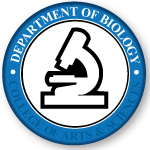Breaking the species barrier: use of SCID mouse-human chimeras for the study of human infectious diseases
Document Type
Article
Publication Date
12-2003
Publication Title
Cellular Microbiology
Volume
5
Issue
12
First Page
849
Last Page
860
Abstract
Mouse–human chimeras have become a novel way to model the interactions between microbial pathogens and human cells, tissues or organs. Diseases studied with human xenografts in severe combined immunodeficient (SCID) mice include Pseudomonas aeruginosa infection in cystic fibrosis, group A streptococci and impetigo, bacillary and amoebic dysentery, and AIDS. In many cases, disease in the human xenograft appears to accurately reproduce the disease in humans, providing a powerful model for identifying virulence factors, host responses to infection and the effects of specific interventions on disease. In this review, we summarize recent studies that have used mouse–human chimeras to understand the pathophysiology of specific bacterial and protozoan infections.
Recommended Citation
Davis, Paul H. and Stanley, Samuel L., "Breaking the species barrier: use of SCID mouse-human chimeras for the study of human infectious diseases" (2003). Biology Faculty Publications. 62.
https://digitalcommons.unomaha.edu/biofacpub/62

